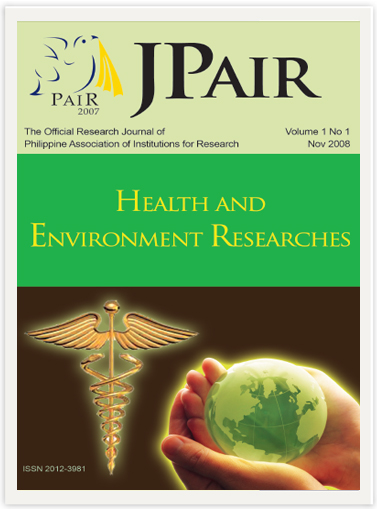Blood Donation Programs of Davao City: Bases for a Policy Ordinance
DOI:
https://doi.org/10.7719/jpair.v1i1.29Keywords:
Blood Donation Program, Blood SupplyAbstract
The study assessed the urgent need for safe and adequate blood supply in Asia, particularly in Davao City, where families often recruit blood donors to meet patient needs. Historically, commercial blood donor systems were established to address immediate needs but provided suboptimal safety. Today, financial recruitment of donors persists, resembling commercial practices, and many hospitals continue such systems. In Davao City, private service-oriented organizations collaborate with the Philippine National Red Cross to conduct bloodletting activities, while schools and colleges contribute minimally due to limited institutionalization. Barangays have largely neglected voluntary bloodletting initiatives. The study gathered data on existing blood donation programs from the Philippine National Red Cross (Davao City Chapter), civic organizations (Rotary, Lions, Kiwanis), the Davao City Health Office, academic institutions, and barangays. Documentary analyses were conducted to examine blood demand and supply in Davao City. Findings revealed roadblocks, primarily the lack of a synchronized policy program for blood donation efforts. To address this, researchers proposed the Barangay Blood Donors Ordinance to reinforce Republic Act 7719, known as the Blood Services Act of 1994. This ordinance aims to promote voluntary non-remunerated blood donation and ensure a safe and adequate supply of blood. The proposal was scheduled for submission to the 15th Regular Council Session of the Davao City Sangguniang Panlungsod by City Councilor Pilar C. Braga before July 2008. Collaboration among local government units, civic organizations, and barangays is essential to strengthen voluntary blood donation programs and align them with national policies.
Metrics
Downloads
Downloads
Published
Issue
Section
License
Copyright (c) 2008 Danilo L. Mejica, Nelia B. Aga

This work is licensed under a Creative Commons Attribution-NonCommercial 4.0 International License.
Open Access. This article published by JPAIR Multidisciplinary Research is licensed under a Creative Commons Attribution-Noncommercial 4.0 International (CC BY-NC 4.0). You are free to share (copy and redistribute the material in any medium or format) and adapt (remix, transform, and build upon the material). Under the following terms, you must give appropriate credit, provide a link to the license, and indicate if changes were made. You may do so in any reasonable manner, but not in any way that suggests the licensor endorses you or your use. You may not use the material for commercial purposes.























